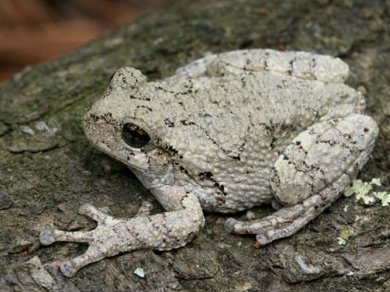Frost-proof tree frogs offer new clues as to how some animals protect themselves from the lethal effects of ice crystals forming within their tissues.
Numerous species have evolved a natural antifreeze system that protects them from frost damage when temperatures dip below freezing. Understanding how such systems work might one day be exploited in preserving human organs for transplant or even in human cryogenics. New research from a team in Ohio explains how Cope’s gray tree frogs, Hyla chrysoscelis, accumulate glycerol during the period of cold acclimation that leads to the development of freeze tolerance. Their study suggests how biochemical changes alter cell wall permeability to glycerol allowing accumulation and so cryoprotection.
- Glycerol uptake by erythrocytes from warm- and cold-acclimated Cope’s gray treefrogs
D. L. Goldstein, J. Frisbie, A. Diller, R. N. Pandey, C. M. Krane,
J. Comparative Physiol. B: Biochem., Systemic, and Environ. Physiol. 2010, 180.
DOI: 10.1007/s00360-010-0496-4




